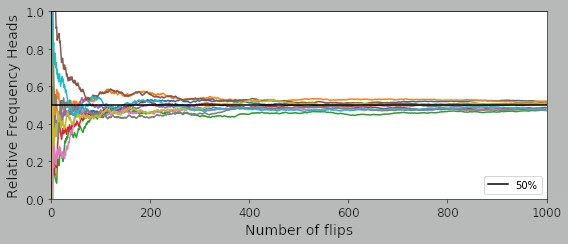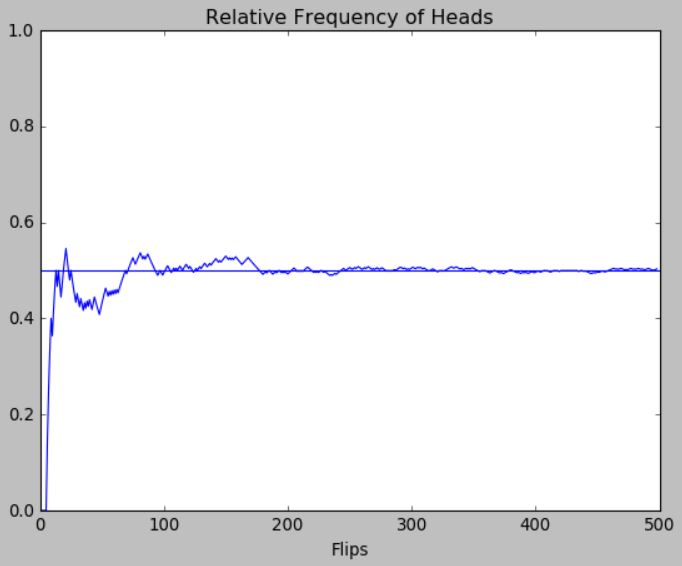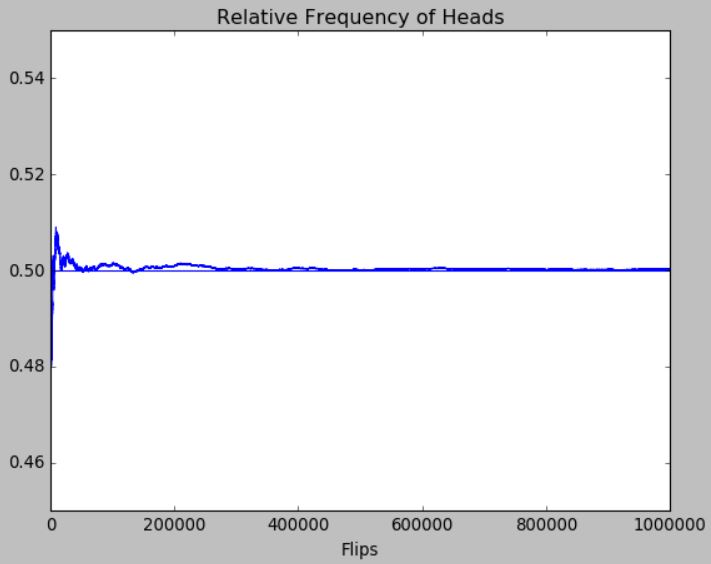Coin Flipping in Python
7/18/19
As I note in Objections to Frequentism
The Strong Law of Large Numbers (SLLN) says that it is almost certain that between the mth and nth observations in a group of length n, the relative frequency of Heads will remain near the fixed value p, whatever p may be (ie. doesn't have to be 1/2), and be within the interval [p-e, p+e], for any small e > 0, provided that m and n are sufficiently large numbers. That is, P(Heads) in [p-e, p+e] > 1 - 1/(m*e2).
I showed this in an Excel spreadsheet here. In this article, I share Jupyter notebook code I wrote to carry out this "coin" flipping in Python.
Here are examples from flipping 500 and 1,000,000 times. For the larger number of flips, note that I zoomed in on the Y-axis
One can also flip several coins at once. Here I show 1,000 flips using 10 coins

Does this behavior happen for real coins or other objects (dice, tacks, playing cards, balls drawn from an urn)? The answer is...go try it.
Thanks for reading!
Please anonymously VOTE on the content you have just read:
Like:Dislike:

